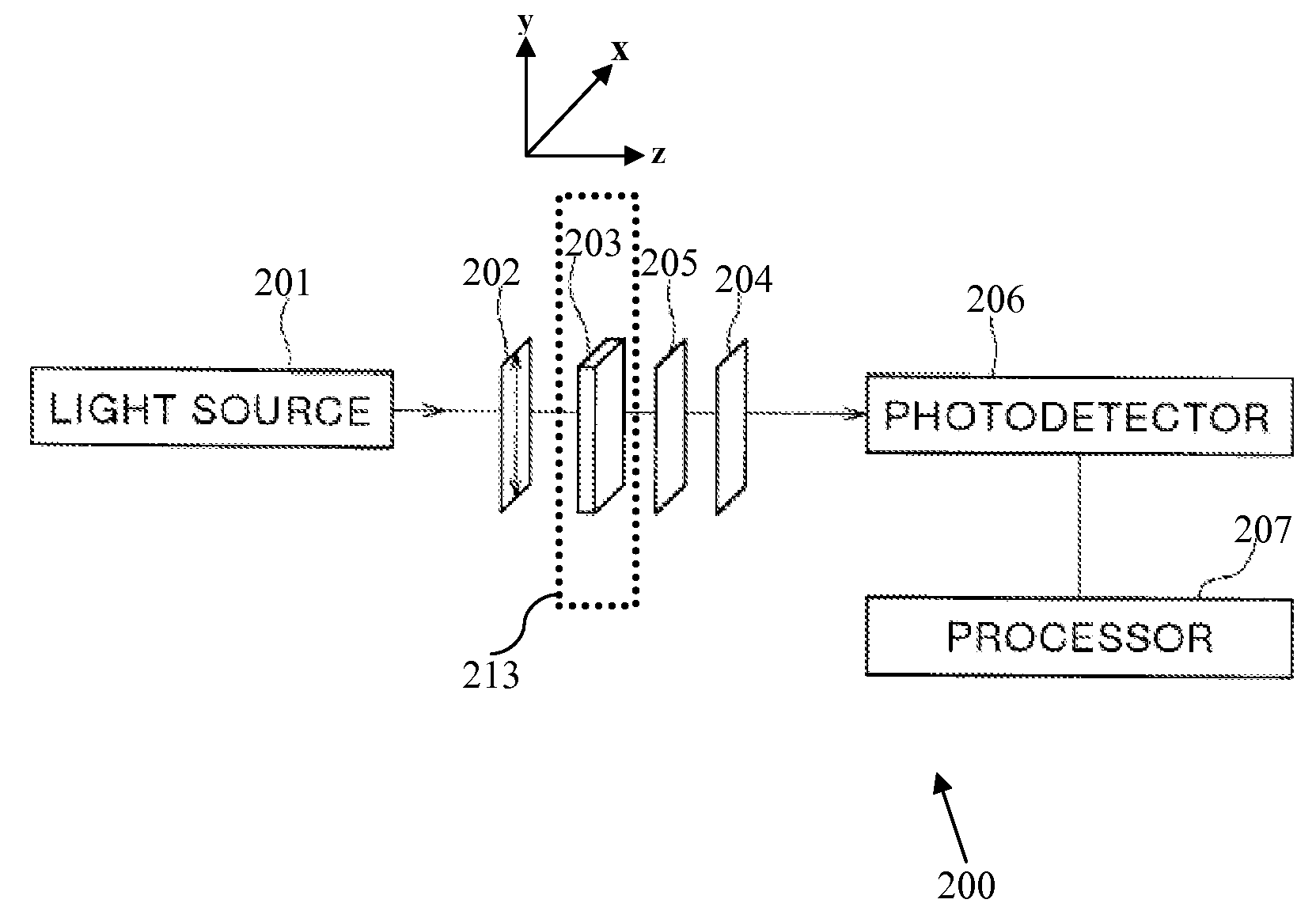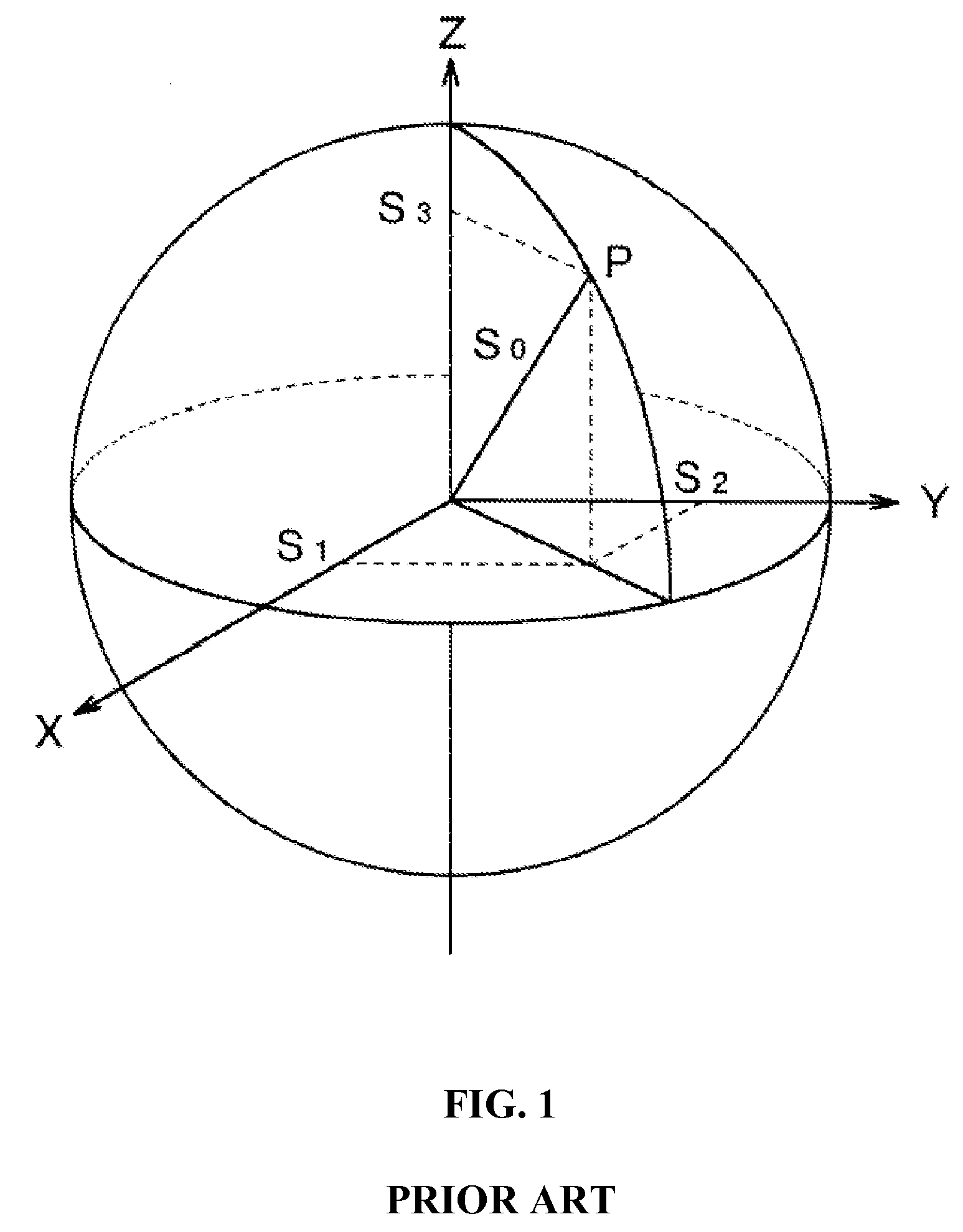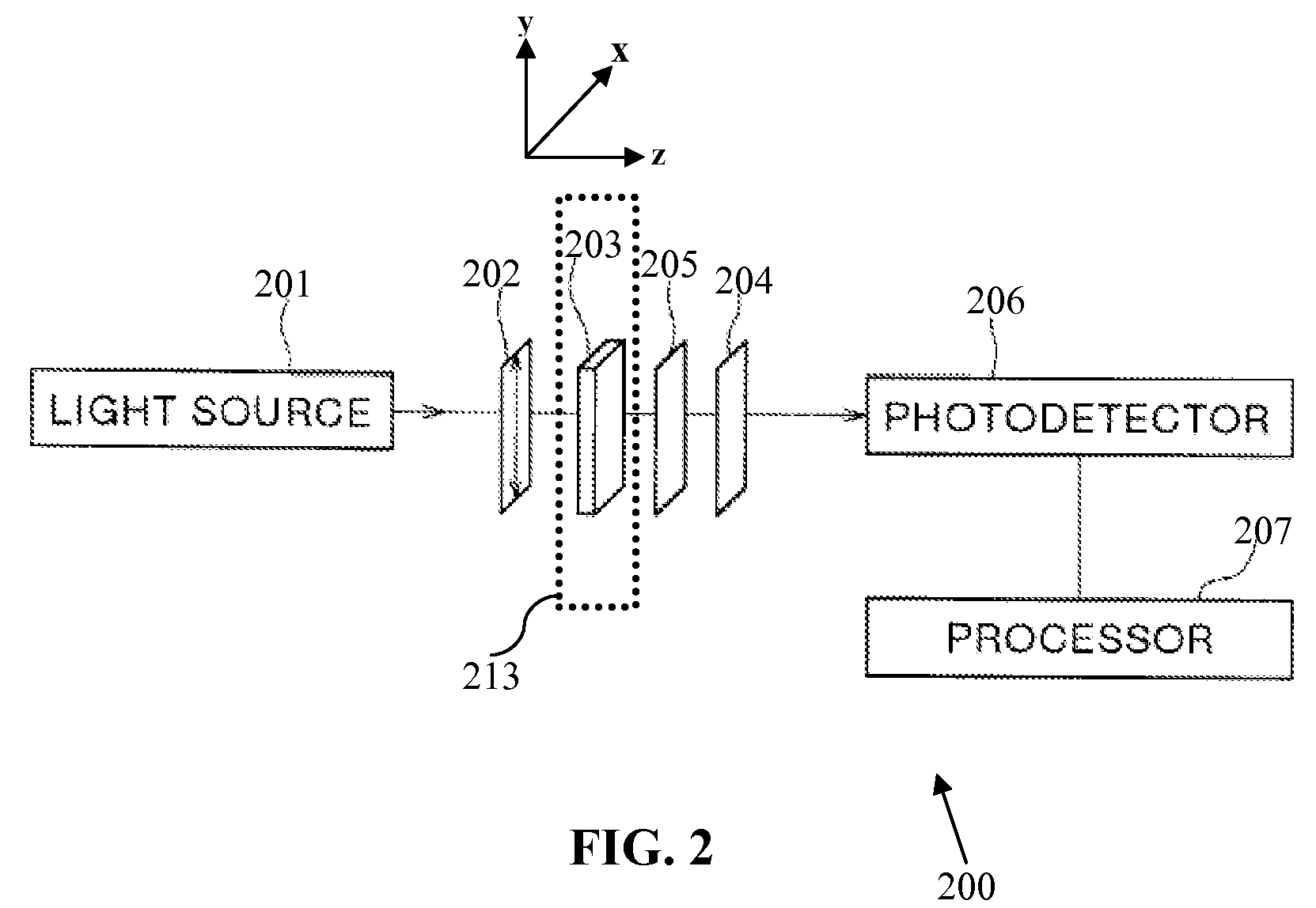System and method for characterizing fibrous materials using stokes parameters
a technology of stokes and parameters, applied in the direction of material analysis, instruments, papermaking, etc., can solve the problems of not being able to detect the maximum value and the minimum value at one and the same position on the paper web, and the accompanying method and apparatus,
- Summary
- Abstract
- Description
- Claims
- Application Information
AI Technical Summary
Benefits of technology
Problems solved by technology
Method used
Image
Examples
Embodiment Construction
[0023]Wave plates have a pair of orthogonal axes which are designated fast and slow. Polarized radiation with its electric field vector parallel to the fast axis travels faster than radiation polarized parallel to the slow axis. It has been recently shown that paper and board acts as a waveplate with its fast axis perpendicular to the fiber orientation and its slow axis parallel to the fiber orientation [See M. Reid, R. Fedosejevs, “Terahertz birefringence and attenuation properties of wood and paper”, Applied Optics, pp. 2766-2772, Vol. 45, No. 12, April 2006]. The retardation of the paper waveplate is determined by the thickness of the waveplate and the fast and slow refractive indices.
[0024]The present invention is based on characterizing the Stokes parameters of electromagnetic radiation after transmission through a sheet of material, such as a paper sheet. Stokes parameters are four (4) parameters which represent a state of polarization. When measuring Stokes parameters, incide...
PUM
| Property | Measurement | Unit |
|---|---|---|
| frequency | aaaaa | aaaaa |
| wavelength | aaaaa | aaaaa |
| wavelength | aaaaa | aaaaa |
Abstract
Description
Claims
Application Information
 Login to View More
Login to View More - R&D
- Intellectual Property
- Life Sciences
- Materials
- Tech Scout
- Unparalleled Data Quality
- Higher Quality Content
- 60% Fewer Hallucinations
Browse by: Latest US Patents, China's latest patents, Technical Efficacy Thesaurus, Application Domain, Technology Topic, Popular Technical Reports.
© 2025 PatSnap. All rights reserved.Legal|Privacy policy|Modern Slavery Act Transparency Statement|Sitemap|About US| Contact US: help@patsnap.com



